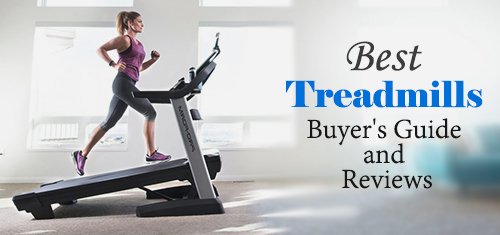Treadmill Buyers Guide
A Treadmill Buyers Guide To Find the Perfect Machine That Suits Your Fitness Needs
Planning to buy a treadmill but do not know where to start? Let this treadmill buying guide teach you the important factors to consider when buying a treadmill that completely matches your needs and running styles.
Treadmill Motors
Treadmill Motors are among the primary treadmill parts that you have to consider and review before buying one. This treadmill buyers guide considers this as the “heart” of the treadmill. The motor is where the machine gets its power to run and operate. As a general rule, choose a treadmill with a big and high-quality motor to ensure powerful performance.
There are 2 types of treadmill motors: an AC and DC motor. AC motors are often more powerful than DC ones, but are usually noisier and may require a dedicated power line. The larger, commercial treadmills are usually designed with AC motors, while home-use machines have DC motors.
Horsepower
Often labeled HP, a treadmill’s horsepower refers to the level of its motor’s power. For various types of treadmills, there are 2 types of HP measurement: either peak duty or continuous duty. Peak duty horsepower reaches the maximum power of the machine for a very short time, but could not sustain it long enough. Continuous duty horsepower, on the other hand, can maintain a certain power level throughout the duration of your workout.
Thus, if you are a serious runner and you’re looking for a treadmill that will satisfy your fitness needs, this treadmill buyers guide suggest you get a treadmill with a continuous duty motor of around 2.5 to 3.0 HP. For leisure walks, you can get by with just 2.0 HP.
Tread Belt
The tread belt is the running surface of the treadmill. Hence, when buying one, make sure to consider if the belt is big and comfortable enough for you as you do your routinely runs and strides. For big runners, get a wide belt. For long-legged runners, get a long belt. The key is to look for one that provides enough comfort and security.
As a general guide, get a tread belt with a minimum length of 45 inches and a width of 16 inches if you're just going to use it for walking. Go for 60 inches by 20 inches if you are a serious runner.
Speed and Incline Levels
Most treadmills are designed to provide a speed range between 0 and 10 miles per hour (mph). This should be enough if you are running leisurely. However, if you are a hardcore runner who needs more extensive trainings, opt for a treadmill that is designed with better speed levels.
As for the machine’s incline, choose one that has an automatic setting that is usually operated using a push button. There are even some machines that are connected to the heart rate monitor that automatically adjusts the elevation of the machine whenever your heart rate varies.
Before you buy one, it is best to test the speed and incline capacities of the machine. Test it for yourself first. Make sure that the treadmill can carry and contorl your weight. If, for example, the treadmill could not elevate your body with ease, do not take it. Choose one that can lift you up easily and comfortably instead.
Control Panel
Although it is good to have an advanced control panel on your treadmill, make sure to get only what you need. The high-priced machines often feature a built-in LCD display that provides various pre-programmed workouts and all the statistics they can give you, including the unnecessary ones.
Just remember that with the advanced technology comes greater cost and expense.
Price
Another critical factor to consider when buying a new or used treadmill is the price. Do you have the budget to get a first-grade, expensive treadmill? Or are you willing to sacrifice some of the advanced features of the machine because you don’t have enough cash?
When buying anything, always remember that you get what you pay for. If you will spend only a little, then expect to get less features from the machine. Also, cheaper models of treadmills are usually of low quality and may not withstand heavy use. On the other hand, if you want durability, security, and advanced technology, then be ready to cash out thousands of bucks.
As a guide, prepare to spend about $1500 for a quality treadmill with all the necessary features on it. You’ll get excellent value for your money and would actually save you more in the long run (with all the repair cost associated with cheap units). At the very least, if budget is a little tight, get something not less than $1000. (See our best treadmill page)
Warranty
Finally, make sure that the treadmill you will purchase has a warranty for its motor, frames, and parts. If you can get one for labor, it’s better. The length of its warranty shall determine if the quality of the machine is good or not. Often, if the machine offers a longer warranty, its quality is better.
Conclusion
Remember, when shopping for a treadmill, it’s not just about what it looks like or how it saves space in your room. There are a lot of factors to consider when choosing the best one for you. Hopefully, this treadmill buyers guide shall help you pick the one that matches your style, fitness needs, and budget.
If you need more help finding a good treadmill that suits your needs. A good place to start is to...
visit our best buy treadmills page
or
visit Amazon's treadmill best sellers page
Return from Treadmill Buyers Guide to Treadmill Articles Page
Check and compare Treadmills here before you buy any.
Check my pricing, ongoing promotions, manufacturer, mark and model, etc then make a decision.



